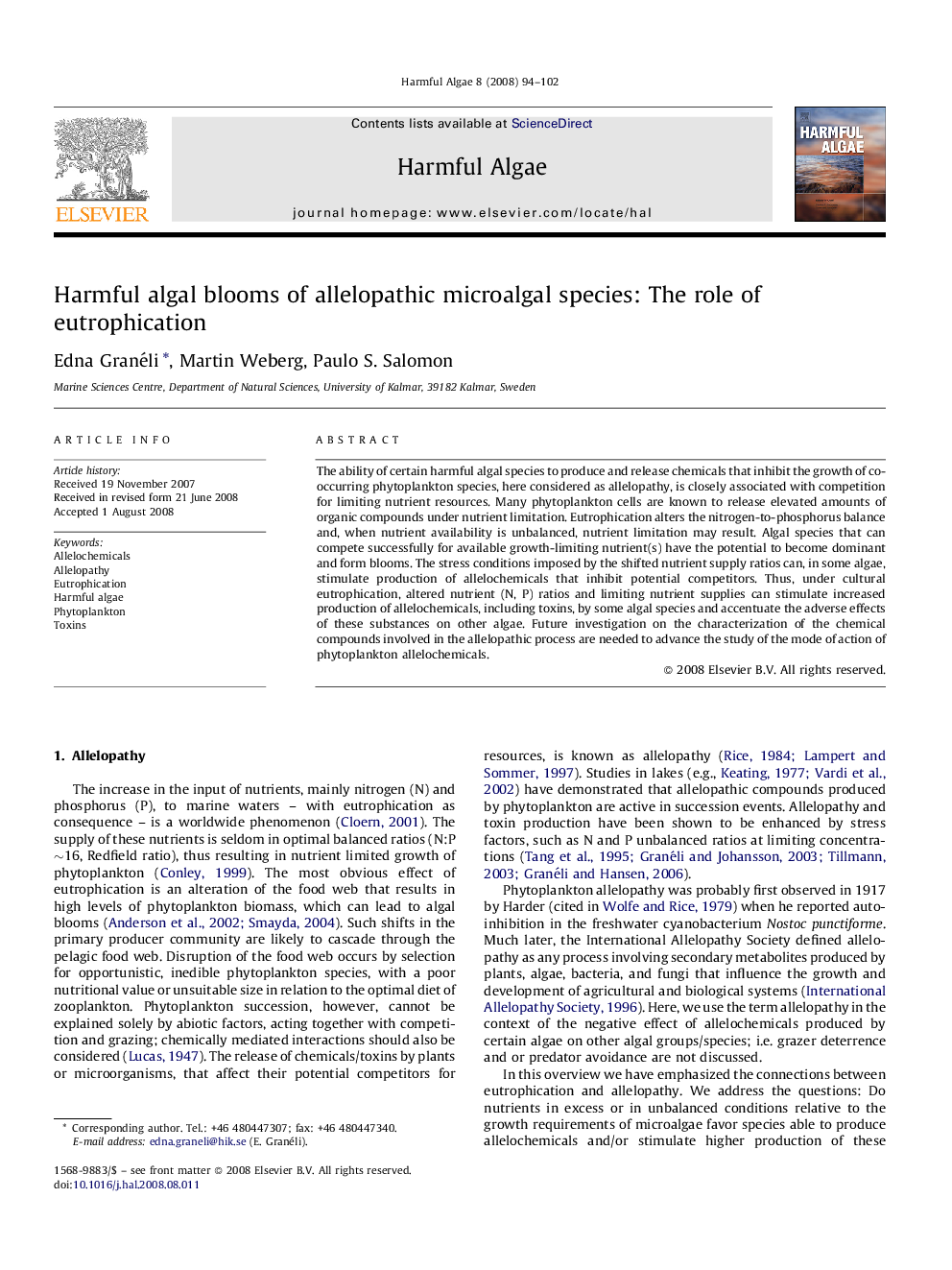| Article ID | Journal | Published Year | Pages | File Type |
|---|---|---|---|---|
| 4545921 | Harmful Algae | 2008 | 9 Pages |
The ability of certain harmful algal species to produce and release chemicals that inhibit the growth of co-occurring phytoplankton species, here considered as allelopathy, is closely associated with competition for limiting nutrient resources. Many phytoplankton cells are known to release elevated amounts of organic compounds under nutrient limitation. Eutrophication alters the nitrogen-to-phosphorus balance and, when nutrient availability is unbalanced, nutrient limitation may result. Algal species that can compete successfully for available growth-limiting nutrient(s) have the potential to become dominant and form blooms. The stress conditions imposed by the shifted nutrient supply ratios can, in some algae, stimulate production of allelochemicals that inhibit potential competitors. Thus, under cultural eutrophication, altered nutrient (N, P) ratios and limiting nutrient supplies can stimulate increased production of allelochemicals, including toxins, by some algal species and accentuate the adverse effects of these substances on other algae. Future investigation on the characterization of the chemical compounds involved in the allelopathic process are needed to advance the study of the mode of action of phytoplankton allelochemicals.
